Archaeologists headlined CHC Historic Preservation Symposium
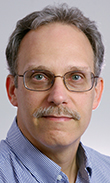
Kevin Glowacki
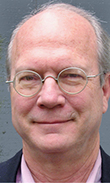
John Stubbs
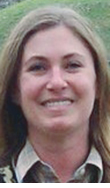
Colleen Hanratty
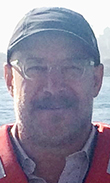
Peter Gavette

Justin Parkoff
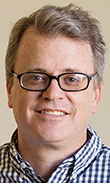
Shawn Evans
Discoveries by intrepid scholars who locate and painstakingly unearth ancient and forgotten cultural treasures from locations around the globe highlighted the 2017 Historic Preservation Symposium, “Heritage, Conservation and Archaeology,” March 3-4 in the Langford Architecture Center’s [Preston Geren Auditorium] (https://goo.gl/maps/X4aBxvuE46y) on the Texas A&M campus.
“Whether it’s deep in a Central American jungle or on the Texas A&M campus, these experts provide important historical insights by combining traditional archaeological techniques with the latest technology,” said Kevin Glowacki, interim director of the [Center for Heritage Conservation] (http://chc.arch.tamu.edu/) at the Texas A&M College of Architecture, sponsors of the 17 th annual symposium. “Archaeology and heritage conservation have always been closely related fields. Both are concerned with protecting the world's cultural resources.”
Conserving historic places
The symposium’s keynote address, "Facing Architectural Conservation's Toughest Challenge: Archaeological Sites,"was presented by John Stubbs , director of preservation studies at Tulane University.
Stubbs has managed conservation initiatives at some of the world’s most historic sites, including [Pompeii] (https://www.britannica.com/place/Pompeii) , an ancient Roman city buried in ash for almost two thousand years from the eruption of nearby Mount Vesuvius, and [Angkor Wat] (http://whc.unesco.org/en/list/668) , the world’s largest religious monument, built in the early 12 th century in present-day Cambodia.
He helped lead the establishment of the [World Monuments Watch] (https://www.wmf.org/watch) , a list of cultural heritage sites facing imminent threats and challenges, that has served as a catalyst for action at hundreds of sites, leading to improved safeguarding of places of cultural heritage, improved tourism management and increased community engagement.
Modeling Mayan Cities
On Saturday, Feb. 4, the symposium continued with Colleen Hanratty , instructor of anthropology at the University of Texas at Tyler and owner of Linda Vista Archaeology, who will present “Modeling a Maya City: Conservation of Archaeological Resources in Northwestern Belize."
Hanratty has conducted archaeological research in the U.S., Mexico, Peru and [Blue Creek, Belize] (http://www.mayaresearchprogram.org/) , a Maya site that archaeologists have been excavating since 1992, producing a massive, important database for understanding the ancient Maya.
Visualizing Alcatraz
Peter Gavette , an archaeologist with the U.S. National Park Service, Golden Gate National Recreation Area, presented “Visualizing Historic Landscapes on Alcatraz in 3-D for Archaeological Prospection.”
Gavette performs high resolution scans to visualize changes throughout time to [Alcatraz] (https://www.nps.gov/alca/index.htm) , a historic San Francisco Bay island that has hosted a lighthouse, military fortification, military prison and federal prison. In 1972, Alcatraz became a national recreation area and received landmark designations in 1976 and 1986.
Reconstructing a Union Ship
Justin Parkoff , project manager at the Texas A&M Conservation Research Laboratory, presented "A Formidable-Looking Pile of Iron Boilers and Machinery: The Conservation and Reconstruction of the [USS Westfield] (http://www.brazosvalleymuseum.org/exhibits/reconstructing-uss-westfield-civil-war-gunboat) in Relation to the Secretary of the Interior’s Standards on Historic Preservation.”
Parkoff is overseeing the lab’s conservation of the Civil War-era ship, which sank on New Year’s Day, 1863, during the Battle of Galveston, when Confederate troops recaptured the island in a surprise attack.
Striving to prevent the Westfield’s capture, the ship’s captain called for its evacuation and set a charge to destroy it. The ship exploded prematurely, and the captain and 12 others went down with the ship.
For nearly 150 years, the Westfield's wreck site posed a navigation hazard to ship traffic until 2009, when its remains were recovered to ensure their preservation.
Preserving cultural sites
Shawn Evans , a principal with [Atkin Olshin Schade Architects] (http://www.aosarchitects.com/) , presented “Historic Preservation, Self-Determination, and the Cultural Resiliency of Traditional Pueblo Villages.”
Evans directs the firm’s preservation and cultural projects, including the pueblos of Cochiti, [Ohkay Owingeh] (http://www.aosarchitects.com/case-study/oweneh-bupingeh-preservation-plan) and Santo Domingo in New Mexico, Fort Apache in Arizona, and Eastern State Penitentiary and the Penn Museum in Pennsylvania.
He has addressed numerous regional and national preservation and museum conferences and is vice president of the New Mexico Heritage Preservation Alliance.
Tags
- arch gallery
- architecture
- archone gallery
- chc gallery
- coa gallery
- events
- heritage conservation
- history
- lectures
- rss
- technology
- video
Related Posts

Heritage symposium to focus on Alamo conservation efforts

Speakers to discuss preserving Texas sites at CHC confab

CHC study reveals decay on Alamo’s iconic west facade

CHC symposium highlights Texas preservation efforts

CHC symposium to feature Houston preservation experts
Follow Us
Facebook Twitter Vimeo Youtube Flickr RSS
Recent Posts

Planning prof heads study of disaster housing aid

A message from the dean

Former student remembered as expert planner

Leading educator named new head of Architecture Dept.








_thumbnail_small.png)
